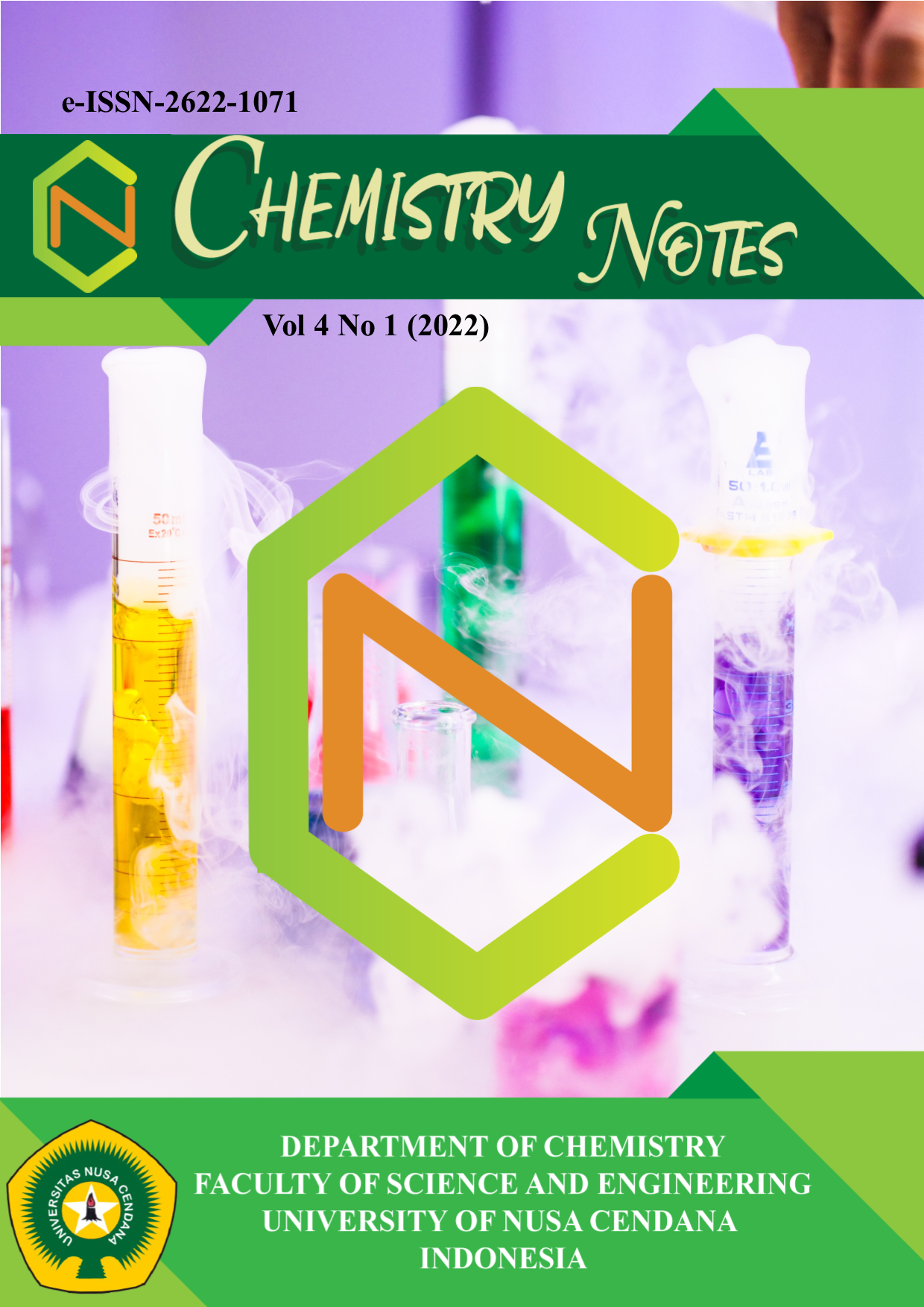Analisis Kualitas Air Desa Nulle Kecamatan Amanuban Barat Kabupaten Timor Tengah Selatan
Abstract
The importance of the role of water in life makes water conditions must be maintained both quantity and quality given the growing human life that also has an impact on the environment. The purpose of this study was to find out the condition and status of water contamination in springs used as drinking water in Nulle village, West Amanuban subdistrict, South Central Timor district. The method of collecting data is obtained from the field. The technique used to determine the location of sampling is the purposive sampling technique. The data collection stage is carried out by conducting initial surveys, determining sampling points, water sampling, examination of water samples in that way (directly) on temperature and pH parameters and in ex (laboratory) on the parameters of TDS, TSS, hardness, detergent, DO, COD and total coliform. The results of the study on both springs showed the value of each of the parameters tested was still within safe limits based on the Regulation of the Minister of Health of the Republic of Indonesia No. 32 of 2017 on Environmental Health Quality Standards and Water Health Requirements for Hygiene, Sanitation, Swimming Pool, Solus Per Aqua and Public Baths except the total coliform parameters in both springs that exceeded the quality standard by 50 amount / 100 mL according to. The average total coliform rate at station 1 is 50.33 total/100 mL and the average at station 2 is 107.67 total/100 mL. The status of water contamination at both stations based on the STORET method is moderate contamination.
Downloads
References
2. Menteri Kesehatan Republik Indonesia. (2017). Peraturan Menteri Kesehatan Republik Indonesia Nomor 32 Tahun 2017 tentang Standar Baku Mutu Kesehatan Lingkungan dan Persyaratan Kesehatan Air untuk Keperluan Higiene, Sanitasi, Kolam Renang, Solus Per Aqua, dan Pemandian Umum.
3. Pemerintah Republik Indonesia. (2021). Peraturan Pemerintah Republik Indonesia Nomor 22 Tahun 2021 tentang Penyelenggaraan Perlindungan dan Pengolahan Lingkungan Hidup.
4. Effendi, H. (2003). Telaah Kualitas Air Bagi Pengelolaan Sumber Daya dan Lingkungan Perairan. Yogyakarta: Kanisius.
5. Mulia, R. (2005). Kesehatan Lingkungan. Jakarta: Graha Ilmu.
6. Gazali, Widiatmono, Rahadi, dan R, Wirosoedarmo.2013.Evaluasi Dampak Pembuangan Limbah Cair Pabrik Kertas Terhadap Kualitas Air Sungai Klinter Kabupaten Nganjuk.Jurnal Keteknikan Pertanian Tropis dan Biosistem 1 (2):1-8.
7. Fakhrizal. (2004). Mewaspadai Limbah Domestik di Kali Mas. Lembaga Kajian Ekologi dan Konservasi Lahan Basah.
8. Novotny, V., dan H. Olem.(1994).Water quality: Prevention, Identification, and Management of Difusse Pollution.New York: van Nostrand Reinhold.
9. Boyd, C. (1990). Water Quality in Ponds. Birmingham: Birmingham Publishing Co.
10. Metcalf and Edyy.(1991).Wastewater Engineering: Treatment, Disposal, and Reuse.Mc Graw Hill Inc.New York
11. Sanborn, M. D., Cole, D., Abelsohn, A., & Weir, E. (2002). Identifying and managing adverse environmental health effect. Canadian Medical Assosiation J, 166 (11): 1431-1436.
12. Suriawiria, U. (1996). Mikrobiologi Air dan Dasar-Dasar Pengolahan Air Buangan Secara Biologis. Bandung: Penerbit Alumni.
13. Badan Standar Nasional.(2008). SNI 6989.57:2008 tentang Metode Pengambilan Contoh Air Permukaan.
14. Ekawati, C. J. (2019). Kondisi Sanitasi Mata Air dan Kandungan E.coli di Wilayah Kota Kupang. The Journal of Environmental Health Research, Vol.3 No.1 (Hal 158 - 161).
15. Kementrian Lingkungan Hidup.(2003).Peraturan Menteri Lingkungan Hidup Nomor 115 Tahun 2003 tentang Pedoman Penentuan Status Mutu Air.

This work is licensed under a Creative Commons Attribution-NonCommercial-NoDerivatives 4.0 International License.
In order to publish in Chemistry Notes, authors are required to agree to the copyright permission stating that the authors give the publisher the right to reproduce, display or distribute the accepted manuscript. In this agreement the authors also automatically declare that the submitted manuscript is exempted from plagiarism issue and conflict of interest among the authors.

 Maria G. O. Malino(1)
Maria G. O. Malino(1)





